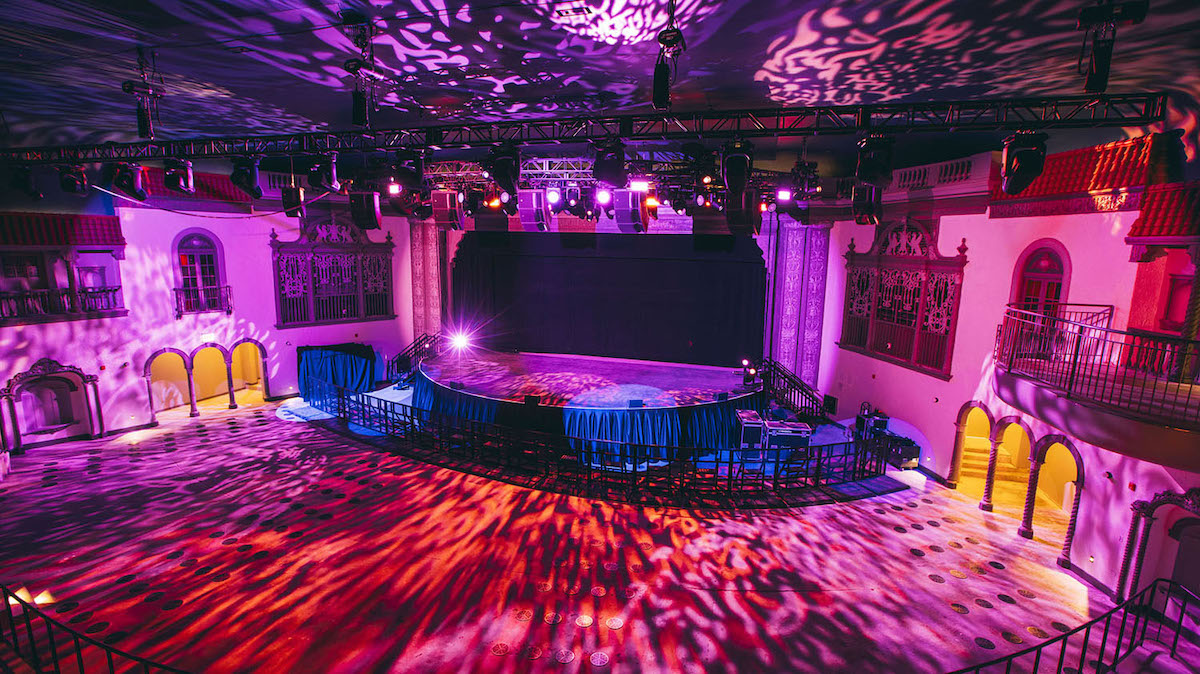McHugh Construction, one of the Midwest’s largest commercial contractors, has completed the $30 million adaptive reuse of Chicago’s historic Ramova Theatre from a long-shuttered single-screen cinema to an 1,800-person concert hall in Chicago’s Bridgeport neighborhood.
As part of the 36,000-sf project at 3510-3520 S. Halsted St., McHugh also built out space for Other Half Brewing, an independent craft brewery and taproom; Ramova Grill, an 18-seat diner; and Ramova Loft, a second-floor 200-person event venue.
JAZZ AGE MOVIE THEATRE CLOSED IN 1985
Ramova Theatre originally opened at the tail end of the Roaring Twenties and quickly became the jewel of the Bridgeport neighborhood with its neon red marquee and Spanish-inspired architecture. However, decades later ticket sales slowed, leading to its closure in 1985. Ramova’s historical and artistic significance was officially recognized with its addition to the National Register of Historic Places in 2021, the same year McHugh embarked on the building’s restoration.
“When we first arrived on the site, it was like a time capsule, with the ticket booth still in place – even with the same curtains from the day it closed,” said Andrew Totten, vice president of McHugh Construction. “But severe water damage destroyed large areas of the plaster ceiling, and the terracotta façade on Halsted Street was missing several parts.
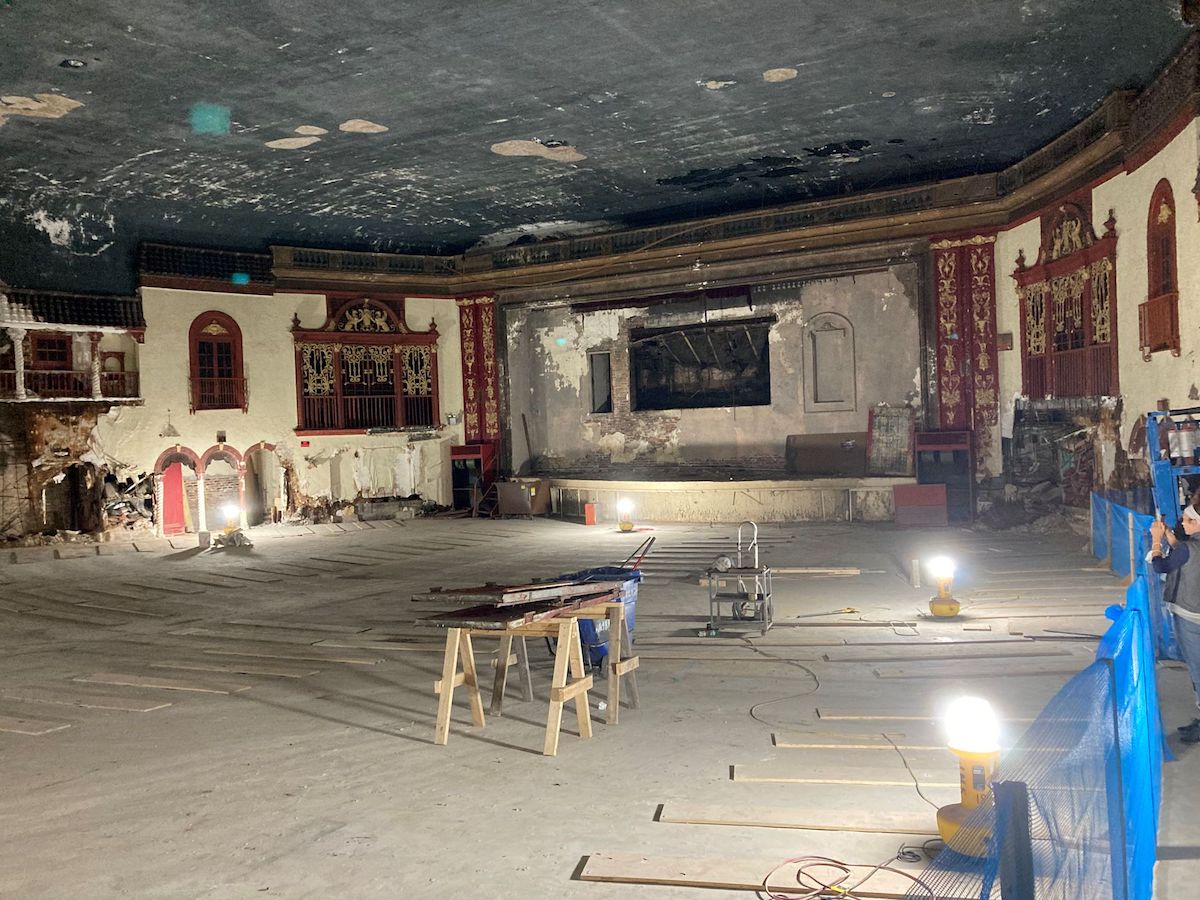
“It was the exact type of complicated project our experienced restoration team loves to bring back to life,” he added. “McHugh has been around longer than the Ramova Theatre, so we knew exactly how and when to preserve, protect, rebuild, and start anew, like when we took casts of the building’s remaining terracotta pieces and had them remade. We were honored to return the building to its 1929 glory and create a magical experience for the community once again.”
For more than two years, McHugh Construction worked closely with project architect O’Riley Office, Baum Revision, and historic preservation specialists to meticulously restore the ornate architectural details in Ramova’s original Spanish-courtyard-style lobby and auditorium.
Pale-yellow stucco-style walls, red-notched archways and columns, decorative bronze wrought-iron faux windows and balconies, a clay-tile roof line, and a ceiling painted midnight blue – all were restored to evoke the beautiful and inviting hacienda ambiance.
VENUE OFFERS UNOBSTRUCTED VIEWS OF THE STAGE
Gone are the velvety movie theater seats. In their place is a 22,000-sf, barrier-free multi-level concrete floor in front of an expansive stage. Rows of spotlights hang from the ceiling, casting multi-colored glows throughout the concert hall. The venue’s new speaker system amplifies the onstage vocals and instruments, connecting artists with the audience. Multiple bars were installed in the back of the auditorium, and a second-floor balcony was revived to offer clear views of the stage.
“The South Side of Chicago is home to the majority of local artists, but it has had the least amount of high-quality space for them to perform and hone their craft – from an aesthetic as well as acoustic point of view,” said Tyler Nevius, Ramova’s developer. “The city and the South Side needed this.”
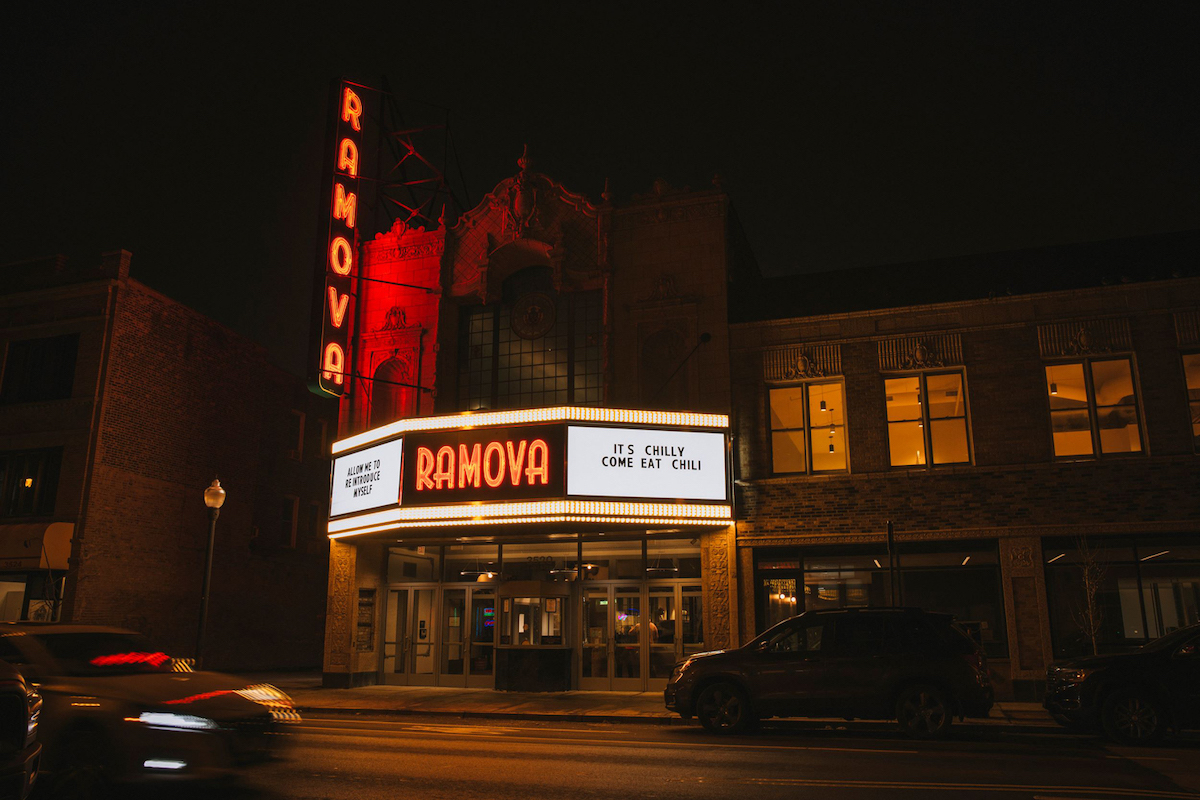
With an eye to attracting big-name performers, Ramova’s new greenroom is worthy of any A-lister, with four separate suites – each with full baths – and an office for tour managers to conduct business, said Nevius. To protect artists from paparazzi and unauthorized personnel, McHugh created direct paths for touring vehicles to arrive, unload equipment, and privately access the greenroom and performance area.
“Andy Totten and I talked with quite a few artists as part of the process,” Nevius said. “First and foremost, we wanted to create a place where they would want to come and perform. One that looks great, sounds even better, and where people can enjoy a show in comfort, which meant a five-star air conditioning system.”
HISTORIC PRESERVATION EXPERIENCE KEY TO SUCCESS
That required McHugh and its subcontractor teams to draw on decades of historic restoration experience to conceal state-of-the-art HVAC, electrical, sound, and fire protection systems within the early 20th-century fabric of the theater building. McHugh also tapped its in-house structural engineering team, McHugh Engineering Group, for expertise on structural modifications and additions to historic and complex structures.
“Multiple times we went to the McHugh office and worked on the whiteboard to understand how to fit everything into the venue,” Nevius said. “It was incredibly tight to shoehorn everything in while remembering what’s essential. For instance, it’s very important for the audience to have immediate and clear access to the bars and bathrooms.”
Hiring locals on the project was also a priority. “It was important to us to have our teams reflect the community we’re a part of,” Nevius said. “We began working with McHugh because we wanted to have local contractors and diversity on the jobsite, which can be hard to do in Chicago, where there is so much development going on so there’s competition for labor, but McHugh made it possible. We had a tremendous number of workers that live in area.”
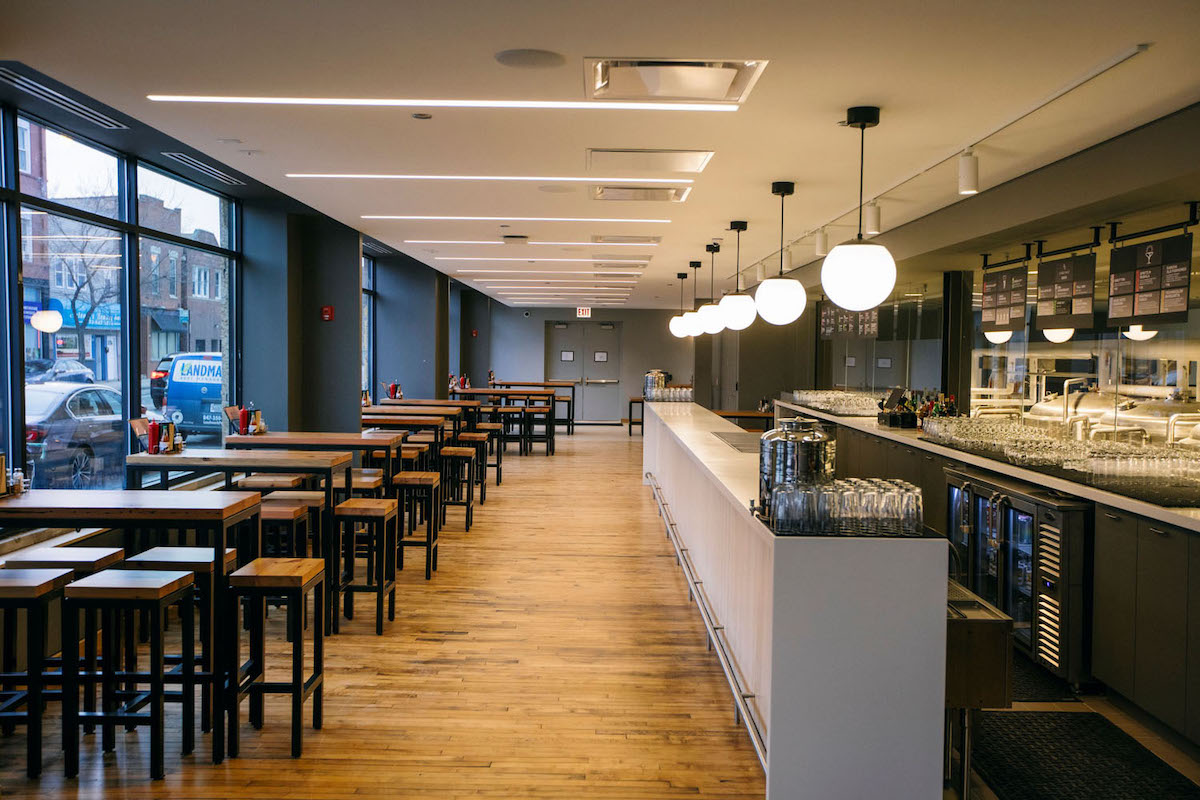
Ramova Loft, the 200-person venue on the second floor above the brewery and taproom, offers space for smaller performances by up-and-coming artists as well as events for local schools and community groups. The parking lot across the street from the building can also be used for community events such as farmers markets, and an empty lot adjacent to the south side of Ramova has been reimagined as a new outdoor beer garden.
“It’s rewarding to see all the dynamic uses come together at this one location to create an authentic community anchor,” Totten said.
The adaptive reuse project was funded by local investors, as well as big-name figures like Quincy Jones, Chance the Rapper, and Jennifer Huston. Tax-increment financing subsidies from the city of Chicago, a state grant, and a Historic Places loan added to the package. McHugh drew on its experience in Chicago public-private projects, such as 43 Green and 508 Pershing at Oakwood Shores in Bronzeville as well as Ogden Commons in Douglas Park.
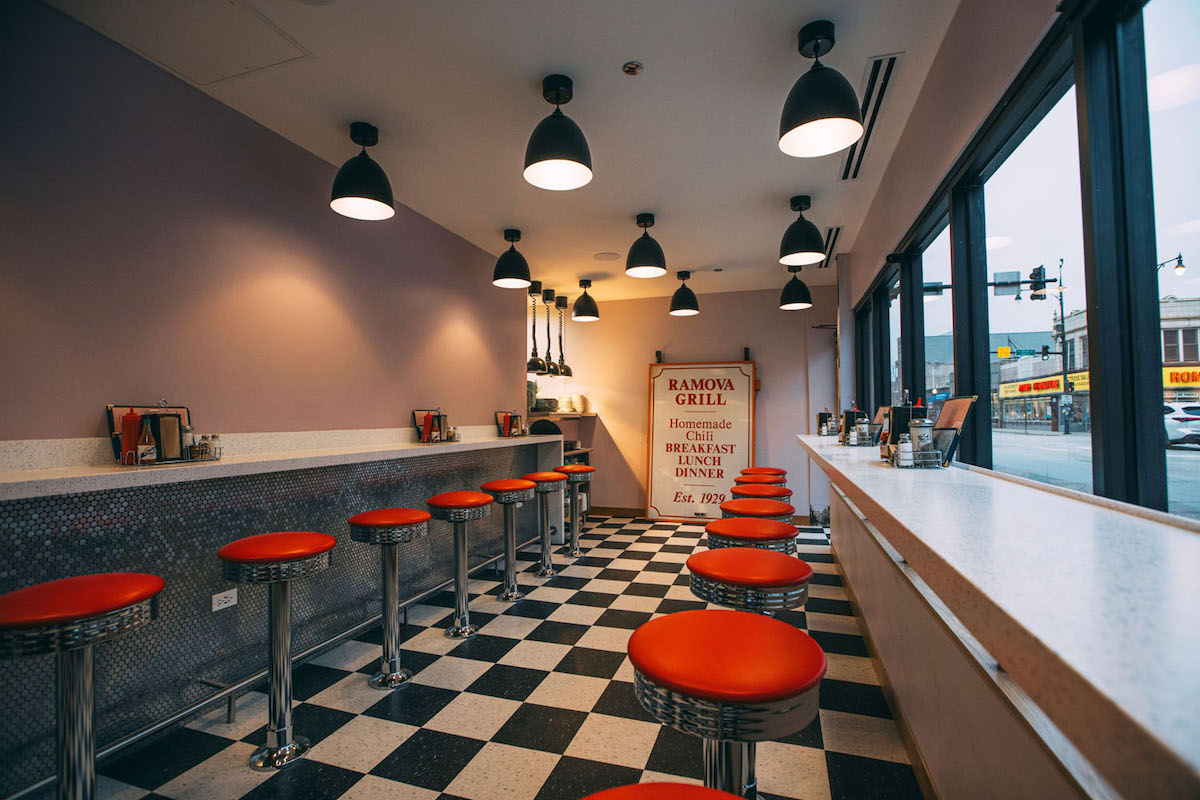
ABOUT MCHUGH CONSTRUCTION
Since its founding in 1897, James McHugh Construction Co. has earned its reputation as a builder of landmark, one-of-a-kind structures in Chicago and other areas of the country. The company specializes in managing multimillion-dollar projects, from ground-up new construction to complex renovations and high-end interiors. As a multi-faceted general contractor, McHugh constructs high-rise concrete towers, steel structures, and buildings using alternative materials such as cold-formed steel, heavy timber, and cross-laminated timber. McHugh has built and renovated iconic structures such as Chicago’s Marina City, Vista Tower, Trump Tower, Aqua Tower, Blackstone Hotel, and Navy Pier (including the 200-foot-tall Centennial Wheel and, most recently, the Sable Hotel at Navy Pier, Curio Collection by Hilton, and the Offshore Rooftop and Bar). For more information, visit www.mchughconstruction.com.
Related Stories
Adaptive Reuse | Oct 22, 2024
Adaptive reuse project transforms 1840s-era mill building into rental housing
A recently opened multifamily property in Lawrence, Mass., is an adaptive reuse of an 1840s-era mill building. Stone Mill Lofts is one of the first all-electric mixed-income multifamily properties in Massachusetts. The all-electric building meets ambitious modern energy codes and stringent National Park Service historic preservation guidelines.
MFPRO+ News | Oct 9, 2024
San Francisco unveils guidelines to streamline office-to-residential conversions
The San Francisco Department of Building Inspection announced a series of new building code guidelines clarifying adaptive reuse code provisions and exceptions for converting office-to-residential buildings. Developed in response to the Commercial to Residential Adaptive Reuse program established in July 2023, the guidelines aim to increase the viability of converting underutilized office buildings into housing by reducing regulatory barriers in specific zoning districts downtown.
Adaptive Reuse | Sep 12, 2024
White paper on office-to-residential conversions released by IAPMO
IAPMO has published a new white paper titled “Adaptive Reuse: Converting Offices to Multi-Residential Family,” a comprehensive analysis of addressing housing shortages through the conversion of office spaces into residential units.
Adaptive Reuse | Aug 29, 2024
More than 1.2 billion sf of office space have strong potential for residential conversion
More than 1.2 billion sf of U.S. office space—14.8% of the nation’s total—have strong potential for conversion to residential use, according to real estate software and services firm Yardi. Yardi’s new Conversion Feasibility Index scores office buildings on their suitability for multifamily conversion.
Adaptive Reuse | Aug 28, 2024
Cities in Washington State will offer tax breaks for office-to-residential conversions
A law passed earlier this year by the Washington State Legislature allows developers to defer sales and use taxes if they convert existing structures, including office buildings, into affordable housing.
Adaptive Reuse | Aug 22, 2024
6 key fire and life safety considerations for office-to-residential conversions
Office-to-residential conversions may be fraught with fire and life safety challenges, from egress requirements to fire protection system gaps. Here are six important considerations to consider.
Reconstruction & Renovation | Aug 19, 2024
Movement to protect historic buildings raises sharp criticism
While the movement to preserve historic buildings has widespread support, it also has some sharp critics with well-funded opposition groups springing up in recent years. Some opponents are linked to the Stand Together Foundation, founded and bankrolled by the Koch family’s conservative philanthropic organization, according to a column in Governing magazine.
Adaptive Reuse | Aug 14, 2024
Adaptive reuse revives a former warehouse in St. Louis
The Victor, as the building is now called, has nearly 400 residential apartments.
Adaptive Reuse | Aug 14, 2024
KPF unveils design for repositioning of Norman Foster’s 8 Canada Square tower in London
8 Canada Square, a Norman Foster-designed office building that’s currently the global headquarters of HSBC Holdings, will have large sections of its façade removed to create landscaped terraces. The project, designed by KPF, will be the world’s largest transformation of an office tower into a sustainable mixed-use building.
Modular Building | Aug 13, 2024
Strategies for attainable housing design with modular construction
Urban, market-rate housing that lower-income workers can actually afford is one of our country’s biggest needs. For multifamily designers, this challenge presents several opportunities for creating housing that workers can afford on their salaries.


